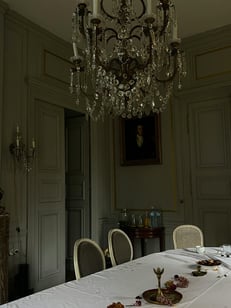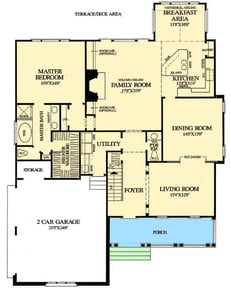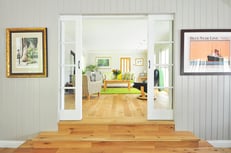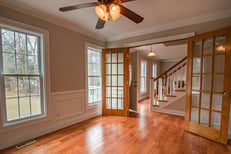
Open Concept VS Traditional Floor Plans
Which one fits your lifestyle?
1/29/20255 min read
There are both, pros and cons to having either floor plans. If you're in the search for a new home, it's crucial to consider the pros and cons to all layouts so you can choose what's best for your lifestyle and needs. Below I have listed some pros and cons from the most common floor plans; Open Concept and Traditional floor plans.
OPEN CONCEPT FLOOR PLAN: Throughout the 20th century, this floorplan design gained popularization. It became so popular due to the fact that people enjoyed combining the most communal spaces into one large space for gatherings and unity. Today, I see this floorplan in most new builds and modern style homes - which is reasonable considering the pros vs the cons.
PROS:
More space + light:
Oftentimes rooms tend to look smaller when they're darker or closed off. Open floor plans tend to solve this issue. Walls and doors take up space and with an open layout, it gives the a few extra square feet of open space. An open concept layout also gives the illusion of more space, so perfect for those looking for just that. Since walls and doors block light from traveling to other spaces., the openness allows for more light to come in but also to flow around. When house hunting or building, it's important to comprehend what direction your house is facing to somewhat estimate how much light you'll get throughout the day -- and around what time too.
Visibility + unity:
Open concept layouts are perfect for families considering that this layout creates great visibility and unity across multiple spaces. One can be cooking in the kitchen while socializing with others in the dining or living areas. Open spaces create unity, conversation and interaction. This layout is great for those who enjoying hosting.
Easier to design:
Choosing curtains, paint colors, flooring and even furniture seems to be quite easier with these open layout spaces because oftentimes, you only need to choose one theme or design style for a larger space rather than multiple. However, please note that this is not always the case.
CONS:
HVAC cost increase:
Having one large, open space is a great idea for many reasons but one downside is the cost of HVAC. Regulating temperatures in large spaces can be challenging, hence why homeowners choosing these layouts often decide to upgrade their insulation, windows and flooring. In the long run, upgrading is worth it, because maintenance and HVAC bills can stack up, quickly. Monthly HVAC bills are frequently higher in open floor layouts than any other residential layouts -- so keep that in mind too.
There are ways to regulate temperatures efficiently in these larger spaces, but an architect or professional will most likely be needed for this process. A great article to read regarding HVAC systems & open floor plans is: Setting Up HVAC for Efficiency in Open Floor Plans by One Hour Air Conditioning and Heating. Not only does it mention the importance of Proper System Sizing but also has some rather possible solutions.
Less Privacy:
The lack of personal space and privacy in open space layouts can be extremely challenging for those who require constant solitude and privacy. For those working from home, open layouts might not be the right decision for you. A significant amount of my clients with this layout have commented that they tend to be easily distracted, as their eyes tend to flow around the room more frequently than not.
Having someone use the blender in the kitchen, while someone watches TV a few feet away while kids do their homework on kitchen table can be extremely overstimulating for everyone involved. But than again, this might not be an concern for everyone.
Noise Travels Quickly:
With these larger spaces, noise travels - which can be great when hosting but not so great when needing quiet time. Reading, napping, sleeping and doing homework can be challenging to do as noise echoes, and therefore can be an inconvenience to those needing little to no noise. While a great way to solve this issue are rugs and larger furniture, it might actually defeat the purpose of an open space layout. Just something to think about :)
Odors Travel Quicker:
Odors are likely travel quicker in an open space concept since there's no walls or barriers. While this may sound great to many people, smells (due to microscopic grease) tend to stick to fabrics, which include but aren't limited to; pillows, couches and and clothes.
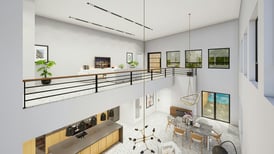
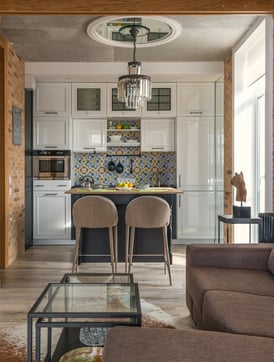
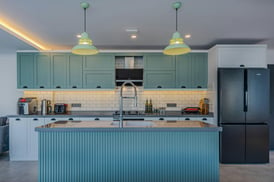



TRADITIONAL FLOOR PLAN: One of the oldest floor plans that can be traced to ancient civilizations. Although floorplans weren't necessarily as detailed as they were during and after the medieval period, many architects enjoyed designing layouts with space separations in mind. Today, it is still an amazing floor plan options for many reasons
PROS:
Prioritizes Privacy:
This is a big one. After COVID-19, we saw why this floorplan is so important for when needing privacy. Today, 1 in 5 employees work from home and therefore, prefer privacy and noise control throughout their home. With a traditional floor plan, noise control and privacy are things you shouldn't worry too much about.
Also, having designated spaces for different purposes may help your brain focus instead of being distracted.
Less Clutter & More Organization:
The clear separation allows for functional organization, such as more furniture and built ins. In traditional floor plans, you cannot see the kitchen's mess from the dining area or vise versa.
Energy Efficiency:
Regulating temperatures in numerous smaller spaces is easier than regulating temperatures in one large space. The air flow in these smaller spaces are easier to control too. In the article, Is Your Floor Plan Making You Sweat? Unveiling the Open vs. Closed Layout Battle - It states how air is less likely to escape when there's walls, doors and functional windows in these closed off spaces but also how individual rooms allow for greater air precision.
Also! Different temperatures for different spaces, is always a smart idea. If it's cold outside and you want to be warm while in the living room, you won't be heating up the kitchen too-- which means that it won't be an uncomfortable temperature for those cooking near the stove/oven.
PS. if you're someone who collects art, having a traditional floor plan is something to consider because there's more wall space!
CONS:
Less Natural Lighting:
Less sunlight usually means more artificial lighting. Relying significantly on artificial lighting can get really expensive. Understanding what direction your home is facing, is so crucial for when trying to figure out about how much natural lighting your house will be receiving, so you can estimate about how much artificial lighting you'll be using throughout the day.
When Hosting; This Floorplan May Be Restrictive.
Unlike open floor plans, traditional floor plans don't have one large space to host. This can be a great thing for some people and a deal breaker for others. Clients who host and chose a traditional floor plan have informed me that they don't like listening to numerous conversations at once and therefore, prefer to have different rooms for various conversations. But, that can also create a division between invitees. Just something to think about..
Might Get Expensive To Furnish/Design:
More walls = more wall space, which means more furniture, art, and paint. Things easily add up -- and not to mention that looking for furniture, art or frames can be so time consuming.
While there are SO many pros and cons to every floor plan, these are usually the ones I encounter the most. All in all, it is crucial for you to look into your options and pick one that fits your lifestyle and everyday routine. If you have any questions or concerns about floor plans -- please email me:
Thank you for your time,
